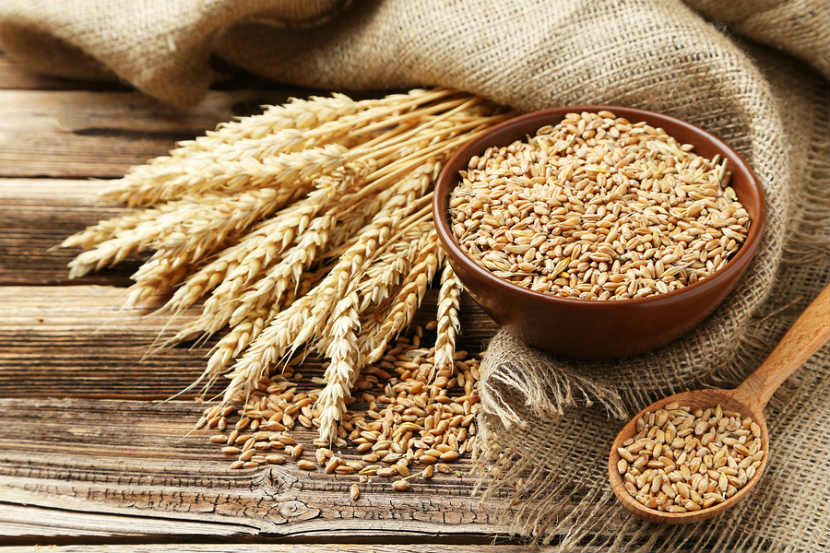
A wheat allergy is a reaction that involves your body’s immune system. When you have a wheat allergy your immune system thinks that the wheat proteins are harmful and triggers different symptoms.
Wheat is one of the nine most common food allergens in Canada. The other eight are: peanuts, tree nuts (such as almonds, Brazil nuts, cashews, hazelnuts, macadamia nuts, pecans, pine nuts, pistachio nuts, and walnuts), sesame seeds, milk, eggs, seafood, soy, and sulphites (a food additive).
What are the symptoms of a wheat allergy?
Symptoms of a wheat allergy include:
- Flushed face, hives or a rash
- Red and itchy skin
- Swelling of the eyes, face, lips, throat or tongue
- Trouble breathing, speaking or swallowing
- Anxiety, distress, faintness, paleness, weakness, sense of fear or doom
- Cramps, diarrhea, vomiting
- A drop in blood pressure, rapid heartbeat, unconsciousness
Wheat allergy doesn’t usually cause anaphylaxis (which is a serious food allergy reaction that can be life-threatening). But any serious allergic reaction to wheat should be checked with your health care provider.
Is a wheat allergy the same as celiac disease?
No. In a wheat allergy, a person`s immune system is reacting to the proteins found in wheat. A wheat allergy does not cause any permanent damage to the intestines.
In celiac disease, a specific protein called gluten actually damages the small intestine. This makes the body less able to absorb many important nutrients. Gluten is found in wheat and also other grains, such as rye, triticale and barley. The symptoms of celiac disease include: chronic diarrhea, weight loss, cramps, bloating, fatigue and anemia.
Check with your health care provider or allergist if you are not sure whether you have a wheat allergy or celiac disease.
Which foods contain or may contain wheat
The safest way to avoid a wheat related reaction is to avoid all food and products that contain or may contain wheat. Stricter Canadian guidelines require that wheat-containing products are clearly labelled. The ingredient list will say “contains: wheat” if it contains this ingredient.
Click here for a list of foods that may contain wheat.
If you’re not sure if a food may contain wheat, always call the food manufacturer.
And remember, products are always changing. This means that some of your favourite foods that used to be wheat free may not be the next time you purchase them. Always read the ingredients list to be safe and when in doubt, don’t eat it
Can my child outgrow a wheat allergy?
Wheat allergies in babies may be outgrown before the age of five. If an adult develops a wheat allergy, it is unlikely to disappear
Tips for following a wheat-free diet
- Bake with non-wheat flours such as amaranth, arrowroot, buckwheat, rice, bean, corn, and soy flours.
- Cook pasta made from buckwheat, rice, kasha, millet or potato.
- Snack on plain baked corn chips, rice cakes, rice crackers or oat pretzels. The flavoured versions of these foods may contain wheat.
- Switch to a breakfast cereal such as oatmeal, puffed rice, corn flakes, puffed millet, puffed amaranth or rice bran. Try this delicious overnight apple pie oatmeal.
- Enjoy plain, fresh or frozen vegetables, fruit, meat, and meat alternatives. The more a food is processed, the greater the chance that wheat may be used.
- Check out our sample meal plan for gluten-free living. Gluten free recipes contain no wheat, rye, oats or barley, so they include more restrictions than needed if you are following a wheat-free diet but the meal plan will still give you lots of great ideas. When eating out, make sure to inform staff of your allergy. Call ahead to find out which dishes are wheat-free.
- Watch out for cross-contamination which can happen when a small amount of wheat gets into food when cooking or handling other food products.
How can a dietitian help?
A dietitian can work with you to plan meals and snacks that are allergen-free and nutritious. If you have a wheat allergy, a dietitian can make sure you are getting enough important nutrients like fibre. If your baby or child has a wheat allergy, a dietitian can give you guidance on which foods to offer to support their growth and development. Connect with a dietitian today!
Bottom line
You can still eat a nutritious and balanced diet if you have a wheat allergy. If you aren’t sure whether a product contains wheat, don’t take any chances. Reading the ingredient list every time is important to avoid having an allergic reaction to wheat.
You may also be interested in:
More on Wheat Allergies: A List of Foods that May Contain Wheat
Food Allergies & Intolerances
Sample Meal Plan for Gluten-Free Living
Eating Well with Celiac Disease
This article was written and reviewed by dietitians from Dietitians of Canada
Last Update – February 26, 2025